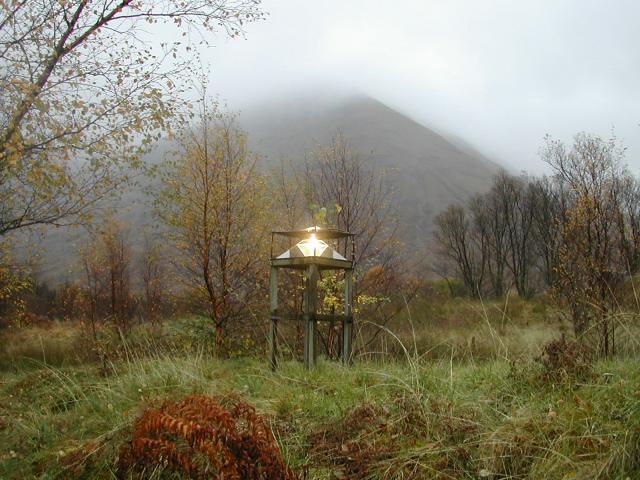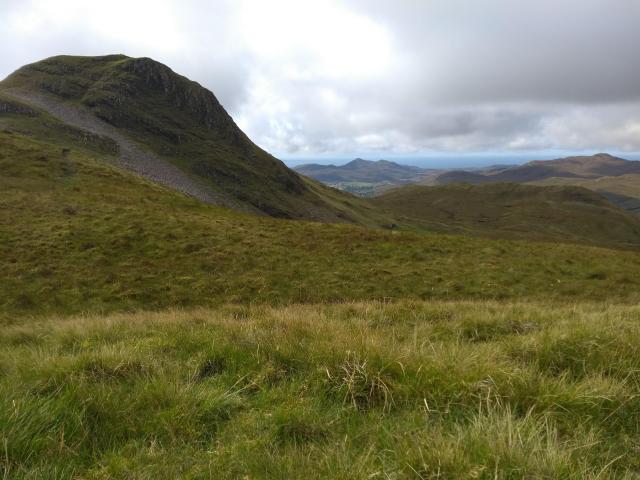A recently completed research project led by Emily Dennis and Tom Brereton of Butterfly Conservation has used Rothamsted Insect Survey (RIS) and National Moth Recording Scheme (NMRS) data to develop trends in the abundance and distribution (occupancy) of Scottish moths.
The research was commissioned by Scottish Natural Heritage and conducted in partnership with Rothamsted Research. The work aimed to investigate the feasibility of developing a moth biodiversity indicator for Scotland and to provide updated information on the status of Scottish moths. A previous study led by Butterfly Conservation showed that across Great Britain, two-thirds of common and widespread macro-moths declined from 1968-2007, whilst the overall abundance of macro-moths decreased by 28%1. The last assessment of Scottish moths made using RIS data from 1975-2004, showed a stable trend, though this is now rather out of date2,3.
With around 1300 species found across a wide range of habitats, moths are an important part of Scotland’s biodiversity, comprising approximately 3% of total species. Moths play an important role in the functioning of ecosystems, as key components of the food chain for higher trophic levels and in providing pollination services. These attributes, together with the cultural services they provide and their sensitivity to environmental changes highlight the highly valuable role moths can play as biodiversity indicator of the environmental impacts of human activity such as urban development, farming, forestry, pollution and climate change.

Biological recording of Scottish moths has been well established since the 1960s. This analysis used data from the two main sources: Firstly, the RIS network of light traps established by Rothamsted Research in 1968, with up to 57 traps generating count data for Scotland over the series and 14 active in 2014 with the traps operating throughout the year. Secondly the NMRS database of records organised by the Biological Records Centre from the late 1960s to early 1980s and by Butterfly Conservation from 2007 onwards, with 1,207,836 moth records available for 563 species for 1970-2014 from 10,594 Scottish 1-km grid squares and 41 vice-counties.
Moth abundance trends from RIS data were assessed using a Poisson generalised linear model (GLM), accounting for site and year effects. Moth occupancy trends from NMRS data were produced using a classical occupancy approach and compared with an alternative Bayesian approach. Multi-species indices in abundance and occupancy were constructed using the geometric mean. Composite linear trends were estimated from the indicator, and a smoothed indicator was estimated by applying a generalised additive model (GAM) to the composite index. Confidence intervals for the abundance and occupancy indicators were estimated using a parametric bootstrap approach, with differing alternative published approaches for estimating the uncertainty tested.
Of the 558 macro-moth species on the Scottish list, abundance and/or occupancy trends were derived for 244 species (44% of the total). The species were mostly common and widespread species, with rare and range-restricted species underrepresented due to a lack of sufficient data for the analysis methods used.
Overall moth abundance (based on 176 species) in Scotland decreased by 20% for 1975-2014 and by 46% for 1990-2014. Over the latter period there were more ‘significantly decreasing’ than ‘significantly increasing’ species (58 versus 5). The occupancy indicator, based on 230 species, showed a 16% increase for 1990-2014, with similar numbers of ‘significantly decreasing’ and ‘significantly increasing’ species (51 versus 60).

Alternative methods produced similar indicators and conclusions, suggesting robustness of the results, for the type of species sampled. Species abundance and occupancy trends were not strongly correlated; in particular species with negative population trends showed varied occupancy responses. Further research into the drivers of moth population changes is required, but increasing occupancy is likely to be driven by a warming summer climate facilitating range expansion, whereas population declines may be driven by reductions in habitat quality, changes in land management practices and warmer, wetter winters.
The main output form the research has been a report on the feasibility of developing moth indicators for Scotland to SNH. A Trend Note on Scottish moths is to be published by SNH and a paper describing the species trends and construction of the indicator will soon be published in the Journal of Insect Conservation4.
Professor Tom Brereton
Associate Director Monitoring and Research
1. Fox, R., Parsons, M.S., Chapman, J.W., Woiwood, I.P., Warren, M.S. & Brooks, D.R. (2013) The State of Britain’s Larger Moths 2013. Butterfly Conservation and Rothamsted Research, Wareham, Dorset, UK https://butterfly-conservation.org/moths/the-state-of-britains-moths
2. Conrad, K.F., Warren, M., Fox, R., Parsons, M. & Woiwod, I.P. (2006). Rapid declines of common, widespread British moths provide evidence of an insect biodiversity crisis. Biological Conservation, 132, 279-291. https://doi.org/10.1016/j.biocon.2006.04.020
3. Fox, R., Conrad, K.F., Parsons, M.S., Warren, M.S. and Woiwood, I.P. (2006) The State of Britain’s Larger Moths 2006. Butterfly Conservation and Rothamsted Research, Wareham, Dorset, UK https://butterfly-conservation.org/moths/the-state-of-britains-moths
4. Dennis, E.B., Brereton, T.M., Morgan, B.J.T., Fox, R., Shortall, C.R., Prescott, T., and Foster, S. (2019) Trends and indicators for quantifying moth abundance and occupancy in Scotland. Journal of Insect Conservation. In press.


